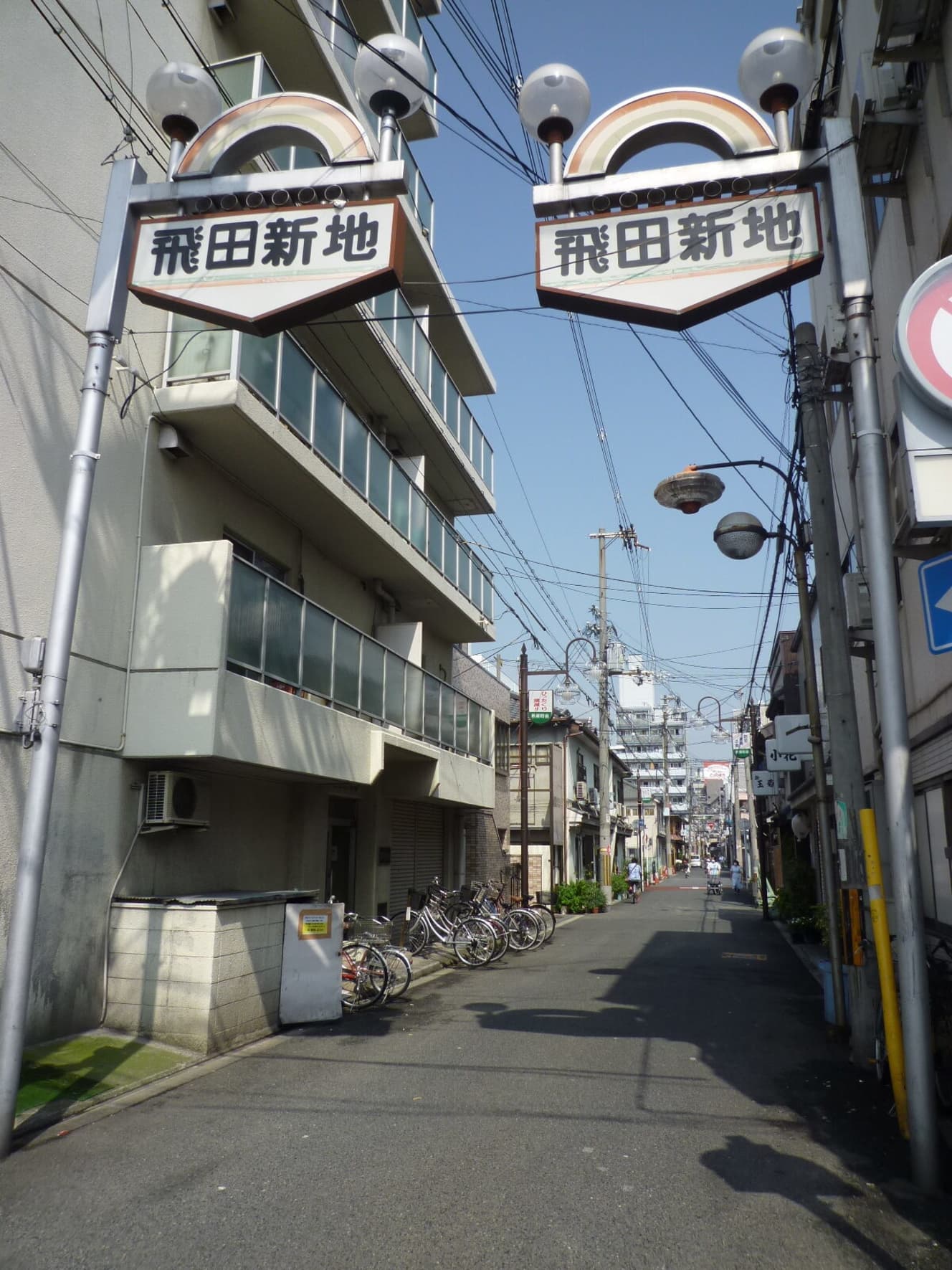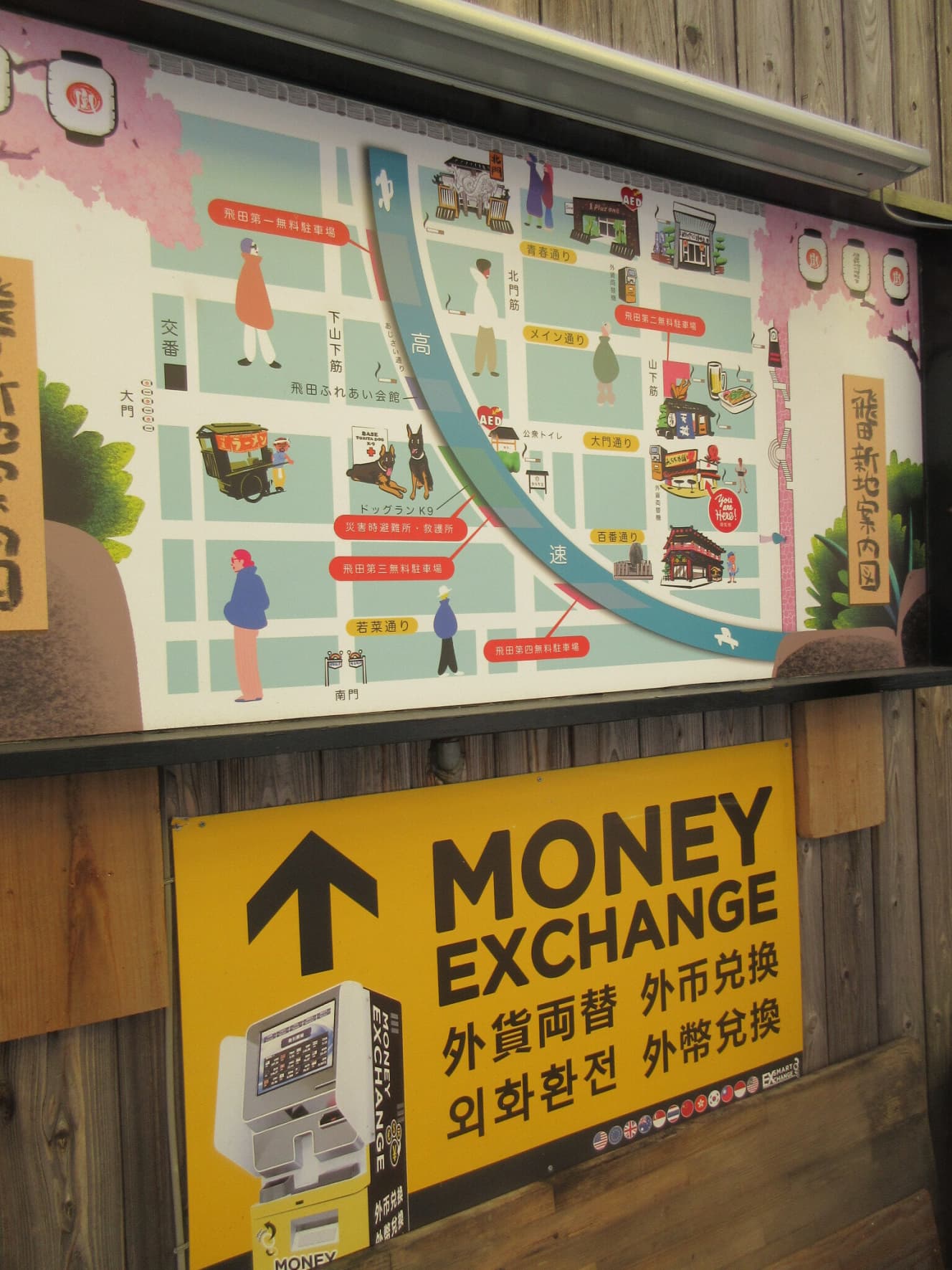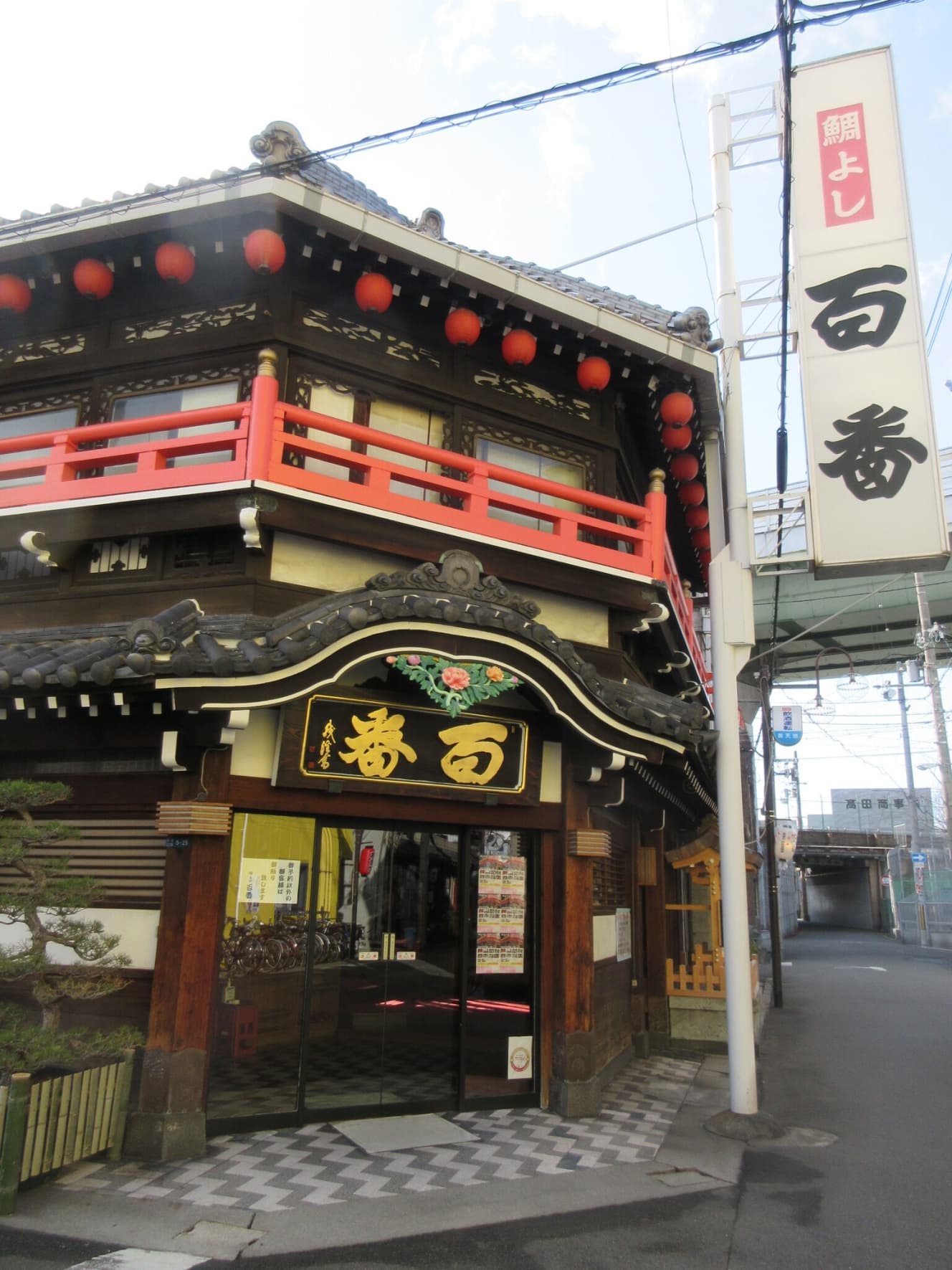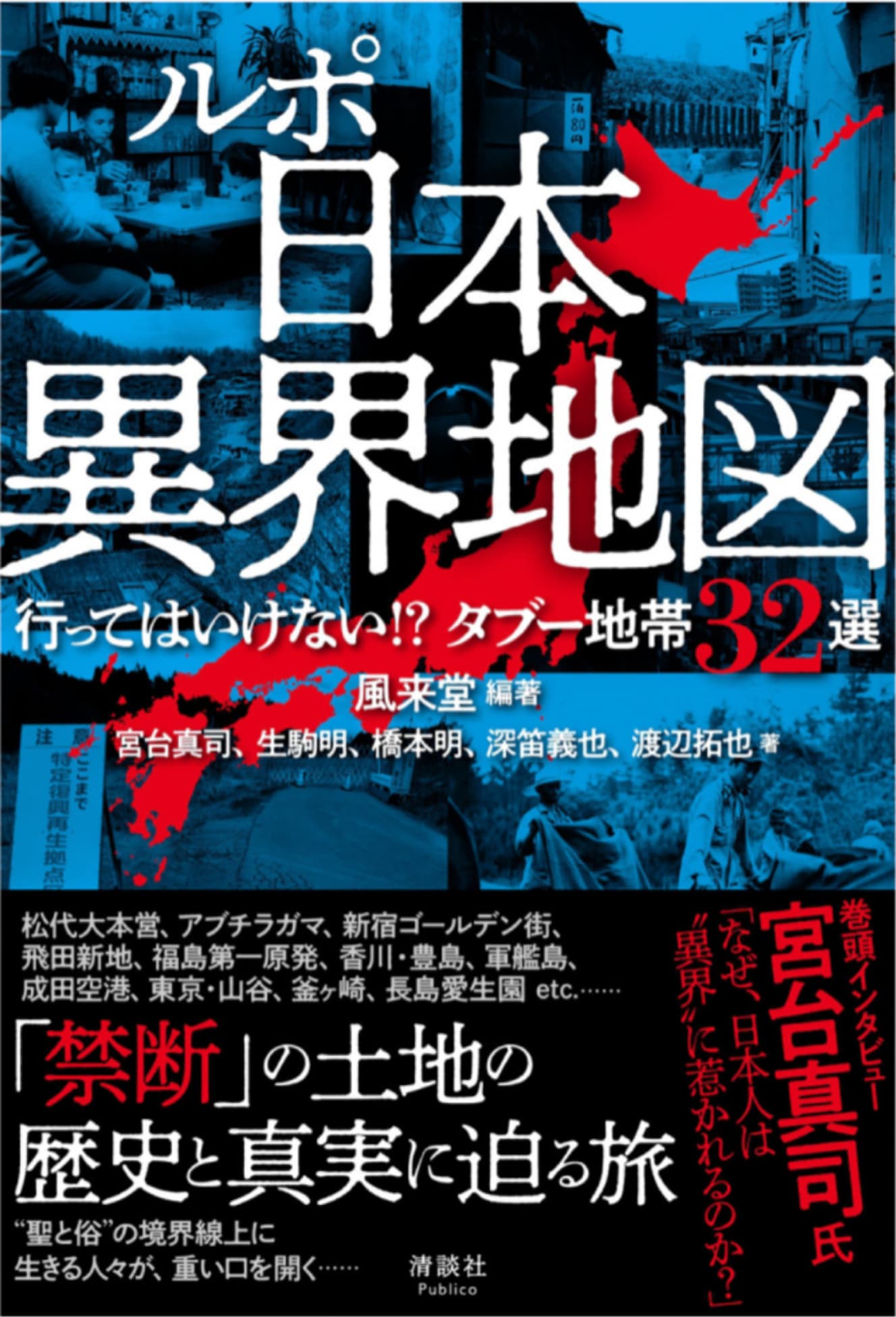Among the fading “other worlds”…there is only one place in the whole country! Tobita Shinchi” is bustling with people today.

Places that are cut off from our daily lives, or have been left far behind in history, or have never attracted people in the first place: the other world. In the book “Reporto: Map of Japan’s Otherworldly Realms, 32 Taboo Zones You Cannot Visit! Taboo Zones 32” (edited by Kazarayudo, Seidansha Publico) introduces such “other worlds” scattered throughout Japan.
The book is divided into sections such as “war, black market,” “colorful town,” “industry, transportation,” and “nature,” and describes the history and current conditions of 32 “other worlds,” including the Matsushiro Imperial Headquarters, Fukushima Daiichi Nuclear Power Plant, and Gunkanjima Island. In this issue, we interviewed Akira Ikoma, a sex journalist in charge of the “Shikigai” part of the book, about the current status of Shikigai as a “different world.
Shiki-gai have long existed in places separated from the places where ordinary citizens lead their lives, and they are a “different world. Historically, because it was more cost-effective to govern these places by consolidating them into a single location, the authorities of the time “segregated” them from the living spaces of the public. Famous examples include brothels such as Yoshiwara and the “red line” and “blue line.
In recent years, however, the presence of these “red-lined” areas seems to be fading away. Ikoma explains the reason for this.
The biggest reason is the increase in the number of business trip-type sex establishments such as delivery health clubs. As business trip-type sex stores become mainstream in terms of number, the number of users of colorful areas is relatively decreasing. Furthermore, as the crackdown on store-based brothels has become stricter, the number of “visible” entertainment districts has been decreasing.
However, a new “invisible” red-light district has appeared. These are the rooms in the homes and hotels of delicatessen operators. Until then, you had to go to a red-light district to have sex, but now you can have sex at home, in a regular business hotel, or even in a city hotel.
In other words, the function of the “red-light district” has been decentralized, as the “other world of the spatial dimension” of the red-light district has been temporarily transformed into the “other world of the temporal dimension” in the rooms of homes and hotels. The “other world” of the time dimension was temporarily transformed into the “other world of the time dimension. It is difficult to imagine that the number of storefront brothels will increase in the future due to strict regulations. The less the presence of the real world, the more the presence of the Internet space and the time dimension.
In addition, while the number of young people playing in delivery services is increasing, the number of middle-aged and older people who used to play mainly at soap operas and other types of establishments is decreasing as they get older, which is also contributing to the decline in demand for colorful areas. In other cases, redevelopment and other trends of the times have resulted in the complete loss of the old atmosphere.
Kanazien (Gifu Prefecture) is a soap town based on a historic brothel, and about 20 years ago there were about 69 establishments operating there. It was close to the station and was a “different world” along with Yukoto (Shiga Prefecture). Then, with the rezoning, a wide road was built in the middle of the area. Now, when I go there in the morning, I see commuters, high school girls, and other local people passing by. There are still about 40 of them left, so I hope they do well.
The west exit of Nagoya Station, once a major entertainment district, is now a shadow of its former self due to the construction of the Linear Shinkansen Line. The tenant buildings that once housed cabarets and health clubs are all gone, leaving only a few long-established health clubs and esthetic clinics. In Nishinakajima, Osaka, which used to be lined with many pinzaro (pin salons), today, when one visits the area, all that stands out are brothels and signs for Asian esthetic clinics.
Among such places, Tobita Shinchi (Osaka Prefecture) and Yugoto, where Ikoma wrote his book “Reporto: A Map of Japan’s Different Worlds,” are the most valuable places that still retain the vestiges of “other worlds” today.
Tobita Shinchi, which retains the atmosphere of a time slip back to the Edo period, is based on the Tobita brothel that opened in 1918. When it first opened, it thrived as a place to enjoy modern entertainment with the latest equipment. In 1958, with the full enforcement of the Anti-Prostitution Law, the brothels were abolished, and the area became a “chon-no-ma-gai,” or “town of chon-no-ma” where ryotei restaurants are located.
The amazing thing about Tobita Shinchi is that there are so many people in the town. The great thing about Tobita-shinchi is that there are so many people in the town. There are no other “entertainment districts” where you can see so many customers on the streets, even though I have covered many places in Japan.
For example, Yoshiwara is crowded with many stores and girls, but the customers are usually inside the stores, so the town is quiet. Tobita Shinchi doesn’t allow reservations, and there are no waiting rooms, so customers have no choice but to wander around on the street. It is a place that is visibly different from the everyday world.
So how is it that such a “different world” has been able to retain its traditional appearance in these days of strict regulations?
For the rest of this article, please refer to the second part, ” Why Are There Still So Many Enthusiastic Customers Attending Yakin, a ‘Different World’ That Suddenly Appeared in a Scenic Area Like a Theme Park?
The second part is here: “Why Are There Still So Many Enthusiastic Visitors to Yakin, an ‘Otherworldly’ Theme Park That Suddenly Appeared in a Scenic Area?



Profile of Akira Ikoma: Akira Ikoma
Sex industry journalist. As editor-in-chief of the "Ore no Tabi" (My Trip) series of sex industry magazines, he has completely explored all of the nation's entertainment districts. His pen name is "Master Ikoma. Author of "Fuzoku no gendai shishi" (Modern History of Fuzoku) (Seidansha Publico).
X (https://twitter.com/ikomashisyo)


